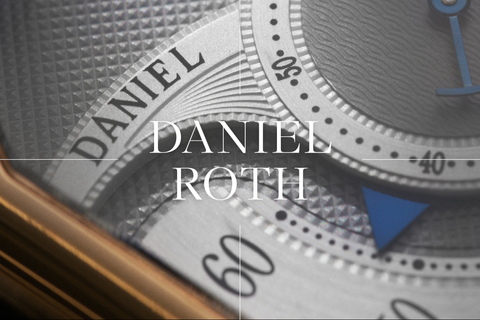This time-only, automatic C107 was Daniel Roth’s first foray into automatic movements, and was created alongside Roth’s more familiar C147 chronographs, as both a complementary yet distinctive series. This is a remarkably restrained piece that still retains most of Roth’s design cues, such as the shade of grey used on the dial and pinstripe guilloché.
You May Also Like
The Story of Daniel Roth
In 1989, Daniel Roth established his manufacture, and became one of the first truly independent watchmakers working under his own name.
Thanks to his previous work as master watchmaker under Breguet, he created Breguet-inspired pieces, with a twist. Roth cemented aesthetic codes which are distinctively his own, from the double-ellipse case to the sharply executed pinstripe guilloché dials used on some of his models. Though his output was limited, it was plentiful in its diversity and inventiveness, from tourbillons to chronographs. Daniel Roth was one of the key brand names of independent watchmaking in the 1990s, alongside Franck Muller, Roger Dubuis and Francois-Paul Journe, among others.
To some extent, Roth’s journey can somewhat be compared to the trajectory of F.P. Journe’s own career, in terms of how they both built their collections. Both introduced another complication – the Résonance and the chronograph – alongside a convenient, everyday automatic watch – the Octa Réserve de Marche and the time-only C107.
A year later, in 1991, Roth would release a manually wound version of this automatic model, decreasing the thickness from 2.4mm, to just 1.73mm, with the reference C167. Again, he made use of a Frederic Piguet movement, though this time hidden behind a solid caseback. Roth also produced versions of this manual wind model with diamonds very early on, from 1990 to 1991.
























































































































































































































